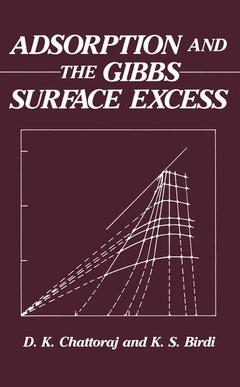The subject matter of this book is not entirely new in that much has been written about the state of the interfacial chemistry in other textbooks. However, the authors have found that there is really a need for a book which can lead an investigator, a student, or a beginn er through the in-depth understanding and descriptions involved in the derivations and usage of the adsorption equations based on the unified concept of the Gibbs surface excess. The derivation of the original Gibbs equation for the liquid interface has been amplified with reformulations and criticisms. Attempts have been frequently made to relate the surface excess quantities with the thermodynamic properties of the physically defined interfacial phase. In the last two decades, useful applications of the Gibbs equations have been made for the study of adsorption at solid-liquid as weIl as liquid-gas interfaces formed in the presence of the multicomponent solutions in the bulk. These recent treatments become useful for the experimental studies of the adsorption of electrolytes and interfacial properties related to neutral and charged monolayers. The consistency of the experimental results with those to be expected from the theories of the electrical double layer needs careful examination. An attempt has been made to present in a single volume all these developments based on the unified concept of the Gibbs surface excess. The study of the adsorption from solution is of considerable importance in the field of biology and in many other branches of applied science.




